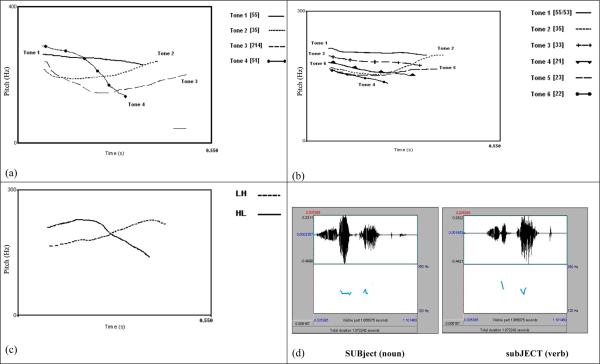Figure 1.
Naturally spoken examples of the pitch patterns of the Mandarin (a: top left) and of the Hong Kong Cantonese (b: top right) tone systems based on syllables /ta/ and /si/, respectively; the contrastive pitch patterns of the Japanese pitch-accent system based on the two-mora form /ame/ (c: bottom left), in which H = high (accented) and L = low (unaccented) and the contrastive lexical stress patterns of English two-syllable word “subject” (d: bottom right). Speech samples were spoken by a female native speaker of each language, and target words were embedded in a frame “I say X” in their native language. The F0 curves were extracted from the speech samples using Praat (Boersma & Weenink, 2005)

